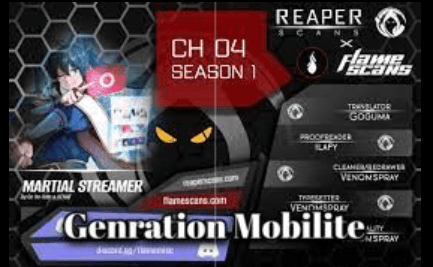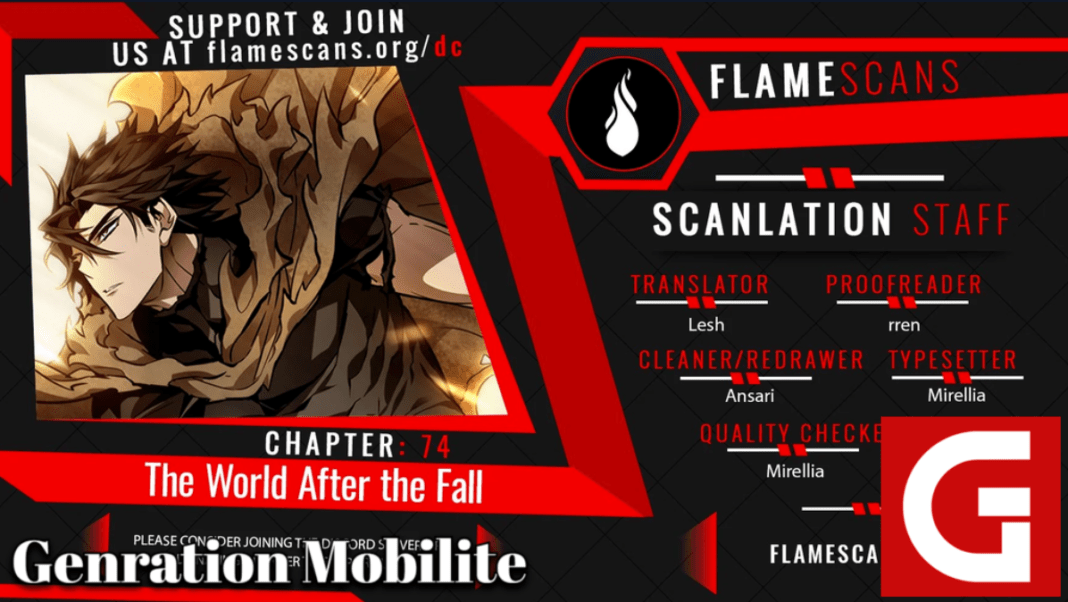Flame Scans is a website that provides free access to comics and manga. While the site may enable copyright infringement, there are legal and ethical ways to enjoy comics online. This content will explore Flame Scans and the world of digital comics from a prudent perspective.
Table of Contents
The Rise of Scanlation Groups
Scanlation groups like Flame Scans emerged to meet the demand for uncensored and immediate access to foreign comics. However, their activities tread an ethically dubious line.
- Scanlation involves translating comics and distributing them online without authorization from publishers. This enables free reading but violates copyright.
- Many scanlation groups adopt a “don’t ask, don’t tell” policy, avoiding explicit confirmation from publishers. This creates ethical ambiguity.
- Scanlation can negatively impact official localization efforts by reducing incentives and demand. However, it also spreads awareness of lesser-known titles.
- The ethical status remains complex, varying by region and publisher attitudes. But ultimately, scanlation undermines copyright principles.
While groups like Flame Scans fill a vacuum, copyright observance, and authorized platforms are ideal for a healthy comics industry.
Exploring the World of Digital Comics
Digital comics offer unparalleled access to content. Various authorized platforms let you read both mainstream and niche titles conveniently and ethically.


Mainstream Publishers
- Marvel, DC, and other major publishers offer digital subscriptions like Marvel Unlimited and DC Universe Infinite. These provide legal access to thousands of comics.
- Publishers also partner with digital stores like Comixology. You can buy individual issues or collections and read seamlessly across devices.
- Many comics are available on ebook services like Kindle and Kobo. A digital version for added convenience often accompanies physical releases.
Niche Publishers
- Smaller publishers like Image and Dark Horse also embrace digital distribution. Their comics are available on platforms like Amazon and BookWalker.
- Webtoon and Tapas host thousands of creator-owned comics in a custom vertical scroll format. These apps feature original English stories not available elsewhere.
- Individual creators sell comics through their websites and services like Gumroad. Digital-first indie comics have flourished thanks to these direct channels.
Public Domain Content
- Sites like Digital Comic Museum and Comic Book Plus legally provide public-domain comics. These vintage books have expired copyrights and are freely accessible.
- Many classic superhero comics published before the 1970s are in the public domain. You can download these for free without ethical concerns.
Piracy Concerns
While digital comics offer great accessibility, piracy remains an issue. Stick to authorized platforms and publishers to avoid ethical pitfalls.
The Art and Culture of Comics
Beyond moral concerns, comics are a rich artistic medium and culture. Appreciating their legacy provides a helpful perspective.
A Storied History
- Comics emerged in the early 20th century in newspaper strips and pulp magazines. Superheroes then rose to prominence during the Golden Age of the 1930s-1940s.
- Manga was developed in Japan after World War II and later spread internationally. Its unique visual language expanded the possibilities of sequential Art.
- Today’s comics enjoy mainstream popularity thanks to successful adaptations and diverse content. The medium continues to evolve and influence wider culture.
Unique Visual Storytelling
- Comics utilize a sequence of images and words to convey narratives and ideas distinctively. The interplay between visuals and text creates unique storytelling.
- Stylistic elements like panel layouts, word balloons, speed lines, and onomatopoeia down-to-line work and coloring distinguish the medium.
- Genres like a slice of life, science fiction, fantasy, comedy, and autobiography demonstrate stylistic flexibility.
Passionate Fandoms
- Comics have nurtured enthusiastic fandoms that closely follow publications and universe lore. Publishers embrace and cultivate these communities.
- Conventions like Comic Con provide meetups for fans to celebrate their passion collectively. Cosplay brings characters to life in creative costumes.
- Fandoms bond over favorite heroes and series. But infighting can also emerge, like the historic Marvel vs DC rivalry. Healthy camaraderie is ideal.
Looking Ahead
While adopting prudent ethics, we can continue enjoying comics’ imagination and artistry. Both mainstream and alternative works offer abundant quality content through authorized platforms of flame scans. Respect for creators and intellectual property allows this amazing medium to flourish.
Exploring Genres and Publishers
The comics world contains immense diversity. Taking a closer look at genres and publishers provides helpful orientation.
Superheroes
- Marvel and DC define the American superhero genre. Flagship characters like Superman, Batman, Spiderman, and the X-Men have become pop culture icons.
- Superhero comics feature continuous story arcs across interconnected titles and franchises. This rewards long-time readers with multilayered lore & flame scans.
- Less-known superheroes, like Image’s Invincible and Dark Horse’s Hellboy, also provide fresh takes.
Fantasy/Science Fiction
- Speculative genres allow for extraordinary worldbuilding. Titles like Saga (Image) and Monstress (Image) fuse fantasy and sci-fi imagination.
- Licensed adaptations expand franchises like Star Wars and Lord of The Rings into comics. Crossover titles like DC’s Batman/Superman blend fictional universes.
Horror
- From tinged suspense to visceral gore, horror comics provide chilling thrills. The Walking Dead (Image) and Locke & Key (IDW) are great contemporary examples.
- Manga offers psychological horror like Uzumaki (Viz Media) and twisted gore like Hellstar Remina (Viz Media).
Comedy/Slice of Life
- Lighthearted everyday stories offer relatable laughs and feelings. All-ages comics like Lumberjanes (BOOM! Studios) and Giant Days (BOOM! Studios) excel here.
- Comedy manga like Azumanga Daioh (Kodansha) and Lucky Star (Kadokawa) derive humor from quotidian high school life.

Non-Fiction flame scans
- Educational and historical comics provide engaging narratives of real events. March (Top Shelf) chronicles the civil rights movement.
- Manga tackles topics like finance in Moyasimon (Del Rey) and wine in Drops of God (Vertical).
- Biographical accounts, like Feynman (First Second), bring interesting figures to life.
This overview shows the medium’s impressive range. There is truly something for everyone.
Finding Your Next Great Comic
With so much variety, it can be daunting to pick your next comic. Here are some tips for finding titles you will love:
- Look at recommendations from critics and fans online. Reviews aggregate opinions to identify acclaimed works in genres you enjoy.
- Visit comic book stores and libraries to browse. You can get firsthand exposure by flipping through issues that catch your eye.
- Check listings on digital platforms. These storefronts allow easy exploration, and subscriptions let you sample broadly.
- Talk to fellow comic fans in communities. They can offer personalized suggestions based on their familiarity.
- Follow creators you already like on social media. Often, they will promote or collaborate on new projects you may enjoy.
- Step outside your comfort zone occasionally. Testing lesser-known works broadens horizons and can uncover hidden gems.
Keeping an open mind and following recommendations leads you to great comics – and supports creators.
Promoting a Healthy Comics Culture
Comics deserve to be enjoyed responsibly in a manner that respects creators. Here are some ways to promote a healthy culture:
- Support authors by purchasing from official publishers and channels rather than unauthorized scans. Every little bit helps sustain creation.
- Write reviews and engage in discussion through social media and forums. This generates interest in fandoms organically.
- Avoid piracy or problematic groups. Ignore fandom toxicity and gatekeeping. Focus on your enjoyment.
- Introduce friends to comics you love to expand the community. Recommend accessible titles that will get them hooked.
- Attend authorized signings and conventions when possible. Interact with creators and fellow fans in person.
- Follow emerging trends, creators, and discussions. Help new voices feel welcome.
- Appreciate the unique cultural heritage of global comics traditions. Engage respectfully and explore recommendations.
Collectively, we can nurture the incredible comics world and ensure its vibrancy for future generations.
Conclusion
While sites like Flame Scans may provide free access to comics, copyrights and creators must be respected. But authorized digital platforms make exploring the medium easier and more ethical than ever. Beyond flame scans questions of legality, comics offer boundless imagination if engaged openly. Untold worlds of sequential Art exist and are worth exploring.


